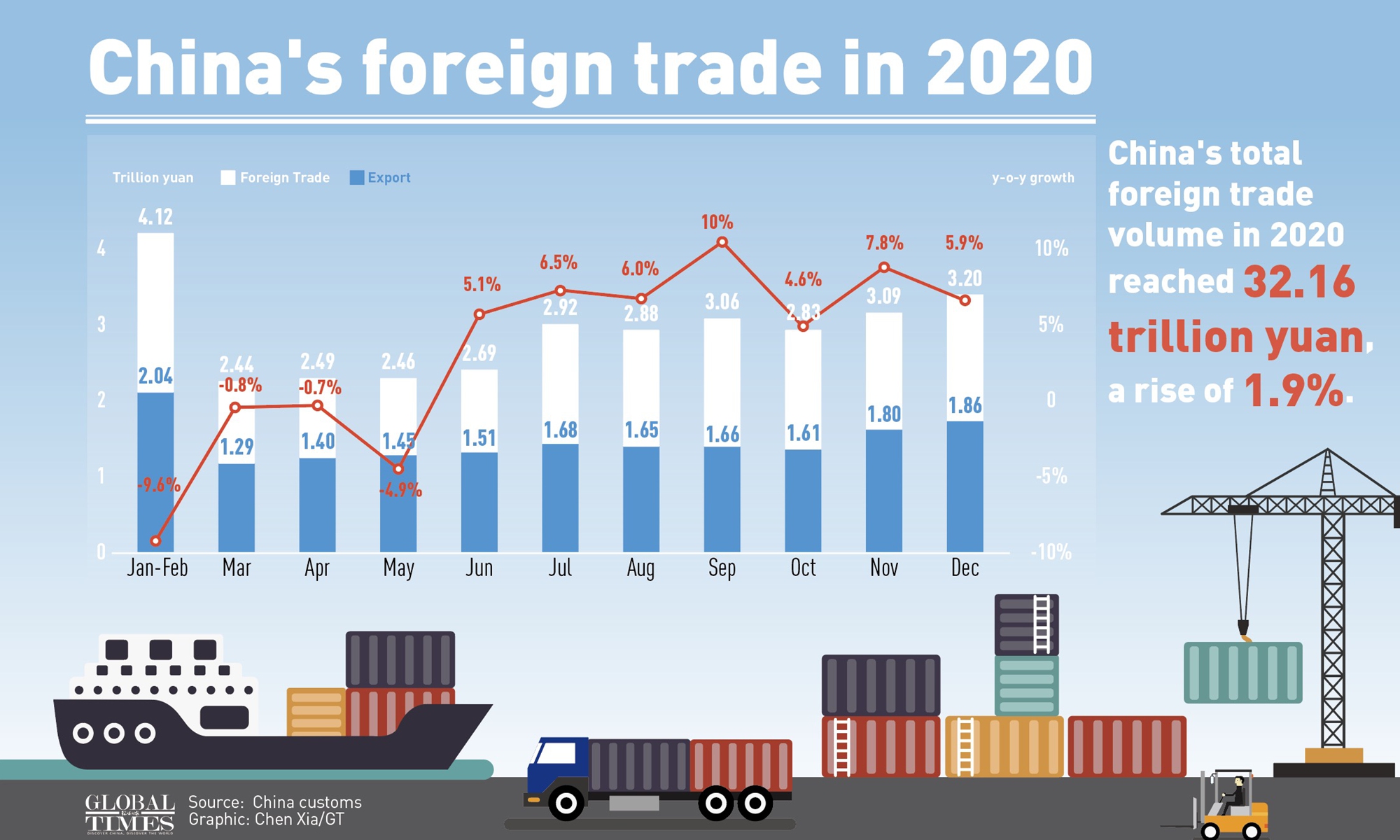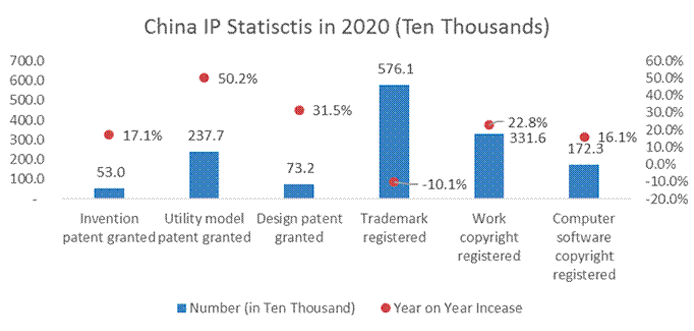Reconcilable Sino-U.S. Differences in Political and Economic System
September 02, 2021
About the author:
John Gong, Professor at the University of International Business and Economics, and Research Fellow at the Academy of China Open Economy Studies at UIBE.
Over the past few years, tensions between China and the United States flared over many issues. While due attention has been paid to the battle for trade, which the Trump administration launched in early 2018, technological might, and military superiority, one underexplored area is the possibility for a U.S.-China clash on ideology.
Illustrated by Pei Pei
For many in Washington, the contest with China should be framed in terms of the two systems’ ideological difference. In other words, it is a zero-sum rivalry where China and the United States both seek to export their political systems throughout the world and topple the values of the other. In this sense, Washington portrays its unilaterally declared competition with China as a competition of values, ideology and a fundamental political system that will ultimately prevail throughout the world. Washington appears to suggest that not only America’s technological, economic and political dominance and supremacy on the world stage are facing an existential challenge, but even its reputation and stature as “a city upon a hill” is at stake. In short, America needs to defend its purported exceptionalism.
Obviously, Beijing doesn’t buy into this argument, not even the concept of the grand competition itself, even though it says that it is not afraid of competition but prepared for it. Beijing’s preferred relationship is what is called “a new type of major-power relationship” to manage differences and conflicts between the two countries. The core premises of such a relationship are that major conflict between the U.S. and China is not inevitable but manageable, that it would be catastrophic for each country and the world should it occur, and that the consequences of noncooperation on key issues are simply too enormous to shrug off.
China’s total trade reached $4.97 trillion in 2020, a nearly 2% rise over 2019.
Source: https://www.globaltimes.cn/
But it looks like the Sino-U.S. relationship is indeed heading the way Washington envisions it, with the Biden Administration inheriting and continuing so far all of the various decoupling strategies left behind by the Trump Administration, from technology to education and other areas. Beijing is therefore forced to rise to the challenge of this grand competition. It is abundantly clear that policy adjustments are happening in China along many fronts, especially domestically.
But one thing Beijing has said is that it is not interested in a competition on ideology with the U.S. As the largest trading nation in the world and despite the many goods it exports all over the world, it is not interested in exporting ideology and values. China’s official position is that there is no universally triumphant political system that is applicable to all, certainly not the American-style liberal democracy. Each country is different with its distinct culture and historical heritage, and it is up to its own people to decide which development path to take. Nevertheless, China is willing to share its own development model and past experiences with the rest of the world.
Even in the absence of competition on ideology, it still begs the question as to whether the differences in the political and economic system between the two countries are fundamentally irreconcilable in their relations, or at least with respect to economic relations. I attempt to address this important question from an economic perspective; that is, to ask whether such structural differences would undermine, to the extent of making it irreconcilable, China and America’s interactions at the trade and investment levels between themselves and with the rest of the world.
This is an important question because both countries carry enormous weights in today’s global trade. China is the world’s largest trader, followed by the U.S., number one in exports, again followed by the U.S., but behind the U.S. in imports. China has made great strides over the years, which some claim is largely due to accession to the WTO, and certainly in combination with other reasons, from a negligible, minuscule player in global trade, even less than Hong Kong, something like less than 1% of global trade before 1990, to an astounding point of 15% of total global trade last year. In contemporary history, the highest percentage of global trade of a single country was achieved by the British Empire, at 23% in 1880, which then dropped to 17% in 1910.
China’s trade figures in the last few quarters suggest that its share in global trade will continue to rise. And it is going to continue to rise because of boisterous economic activities domestically, because of the expanding global trading networks that Corporate China continues to knit, and because of China’s Belt & Road initiative that is still going strong. During a very difficult Covid-19 pandemic, China’s total trade still grew nearly 2%, while exports increased by 4% last year. If this trend continues, even if China’s trade increases at a moderate 3% a year compared to the world average, its share in total global trade will expand to 20% by 2030. This achievement would be very close to the historical feat once achieved by the British Empire at the turn of the twentieth century. A simple fact that one out of five containers traveling on the high seas is loaded with goods from China would impart enormous implications to world politics.
Today Washington claims that China’s economic system is “state-steered capitalism”, and some politicians in the U.S. accuse China of being engaged in “distortionary” and “mercantilist” trade practices fundamentally due to that political and economic system. These practices are the driving forces behind China’s success in trade. The “state-steered capitalism” accusation that Washington levels against China basically falls into three categories. One is related to industrial policy, such as state subsidies and the preferential treatment of state-owned enterprises (SOEs). The second is related to macroeconomic policies, such as currency manipulation and market access. The third category is related to the protection of intellectual property rights, such as alleged IPR theft, forced technology transfer, and lax IPR protection.
But no country, or company for that matter, can rise to commercial and technological prominence just because of government policies. Just like American companies, Chinese companies have excelled because of entirely different reasons. Every success story is unique. China’s market conditions also play an important role. For example, larger production volumes facilitate repeated production cycles that encourage standardization and automation, prevent waste, and enhance productivity. Dense industry clusters provide direct access to networks of specialized suppliers, labor and demand, as well as extensive knowledge spillovers across firms, and between firms and local academic or research institutions. High-quality infrastructure and proximity to population centers facilitate hiring, procurement, and logistics activities. Factor input prices and labor costs are also relatively low compared to other countries.
Of the three categories of accusations against China, IPR-related issues are nearing resolution, and the situation is indeed improving. The new foreign direct investment (FDI) law prohibits forced technology transfer outright. China has also recently passed a new piece of intellectual property legislation that strengthens IPR protection. The government is also conducting an antitrust campaign against big-tech and e-commerce companies, and going after IPR violations is part of that. With regard to online hacking, there is some agreement between China and the U.S. governments to reduce and crack down on those types of activities.
Soure: https://www.ccpit-patent.com.cn
With respect to macro policies, the currency manipulation issue is a total hoax that Washington is not even talking about these days. China is also making progress on market access, as its opening-up drive is deepening. More pilot free trade zones have been unveiled in recent years, and the Ministry of Commerce’s negative list for FDI keeps shrinking.
The more thorny structural difference between the two countries concerns industrial policy, state aid, and the SOE issue. The question is whether these areas constitute an irreconcilable hurdle between China’s unique political and economic systems with the U.S. and with the WTO, both in substance and in spirit. But if one delves into these issues, it is clear they have nothing to do ideology, values, or a unique political and economic system. It is also evident that all of these things can be addressed through bilateral and multilateral negotiations.
China’s industrial policy, a subject of intense scrutiny by Washington, is actually being imitated by Joe Biden’s $2-trillion infrastructure+ plan which smacks of every bit of a whole-of-nation industrial policy. Other examples include the U.S. federal government’s initiative on artificial intelligence, the Quantum Economic Development Consortium led by the Department of Energy, upcoming legislations calling for the greater participation of federal agencies in technology standard-setting bodies. All these belong to the industrial policy category.
Source: https://www.pexels.com
State aid is provided by most of the major powers’ central government and regional governments. The decade-long litigations between the U.S. and the European Union over Boeing and Airbus airplanes immediately come to mind. Perhaps it is true that China is more prominent in terms of the scale and scope of state aid. Many of these forms of government assistance are actually investment incentive measures provided by the provincial or municipal governments as opposed to a central government heralded national policy. And this is not a unique phenomenon in China, as many advanced economies, including the U.S., have seen local governments providing such incentives. One good example concerns Intel’s $20-billion investment in the state of Arizona, which reportedly provided 10-digit subsidies, potentially worth billions of dollars. But regardless of the way it is implemented, state aid has nothing to do with ideology or political system. WTO does have a treaty, albeit a weak treaty in my view, to regulate subsidies. Therefore, this issue can be resolved in future WTO reforms or through bilateral negotiations between China and the U.S.
The SOE phenomenon is probably more directly relevant to China’s unique political and economic system. But this is not a unique phenomenon in China either. Europe has more SOEs than the U.S., but the latter has at least one large SOE: the U.S. Postal Service. Again, the world has a framework to regulate the SOE issue via free trade agreements. The Organization for Economic Co-operation and Development (OECD) has spent many years developing a regulatory framework called competitive neutrality to deal with SOEs. The Comprehensive and Progressive Agreement for Trans-Pacific Partnership (CPTPP) has largely incorporated this framework to deal with SOEs in the signed version. This author has participated in studies of gap analysis for the Chinese government to understand how the country can meet competitive neutrality principles embedded in the CPTPP. More importantly, the Chinese government has openly committed to joining the CPTPP, and as a corollary, to competitive neutrality principles as well.
In summary, this brief note intends to convey the message that there is nothing inherently contradictory, nor irreconcilable, between China’s political and economic system and the U.S., the WTO, and the rest of the world. All the issues raised by Washington so far, pertaining to so-called distortionary trade practices, true or otherwise, can be potentially addressed through bilateral and multilateral negotiations. From that perspective, the world’s largest trading nation is no different from other WTO members, and therefore should not be treated differently from other WTO members.
What this means is that the grand competition initiated by Washington is grounded on a premise that bodes well for a healthy, constructive and mutually beneficial competition. From Beijing’s perspective, it certainly hopes for a relationship that is better than such a grandiose competition. But even when push comes to shove, this competition is still manageable, and hopefully could become a positive influence on the national interests of both countries.
—————————————————————
ON TIMES WE FOCUS.
Should you have any questions, please contact us at public@taiheglobal.org



